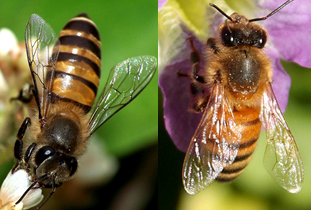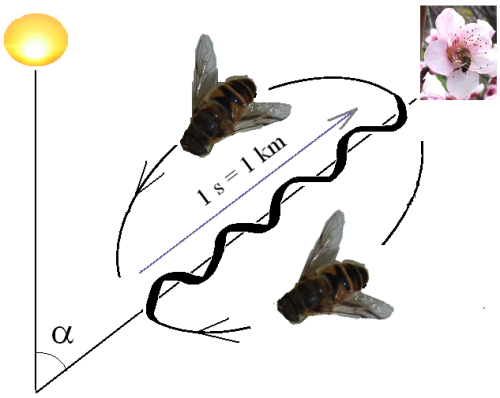by Piter Kehoma Boll
![]() Communication is essential for humans, and so it is for other animals that live in groups. It is intersting that even though modern humans only came to be about 200,000 years ago, the number of languages which evolved in our species since then is huge. And two people who speak different languages usually cannot understand each other. Even simple hand gestures, like the beckoning sign, meaning “come here”, is rather different between cultures. Most of our communication is not inherited, but rather learned.
Communication is essential for humans, and so it is for other animals that live in groups. It is intersting that even though modern humans only came to be about 200,000 years ago, the number of languages which evolved in our species since then is huge. And two people who speak different languages usually cannot understand each other. Even simple hand gestures, like the beckoning sign, meaning “come here”, is rather different between cultures. Most of our communication is not inherited, but rather learned.

Three different ways to say “come here” with gestures. The first two are western style and the last is eastern style. Photos taken from forum.onverse.com (left), scmorgan.com (center) and japanpowered.com (right).
But what about communication in other animals? Is it possible that different languages evolve in separate populations so that one group cannot understand what the other is saying?
One well-known and well-studied form of communication in animals is the honeybee waggle dance, used by honeybees to indicate the location of a food source to others. This dance informs the direction and distance of the food source from the hive in order to guide other bees to the right spot.
Basically, what the bee does is to move in a path forming an 8-shaped figure. The angle of the dance in relation to the hive’s orientation indicates the angle of the food source in relation to the sun. The middle part of the dance, which represents the part where the two loops of the 8 overlap, is done with a frenetic waggle. The duration of this waggle part of the dance informs the distance of the food source from the hive.
There are many subspecies of honeybees and the waggle dance may have become different in each of them by evolution, creating different dance languages or dialects. It’s difficult, however, to compare those dialects because they can be adjusted to different conditions in the environment, so two hives must be in the very same environment to be compared. The best way to compare differences would be rearing different bee species in the same hive. But that is difficult because bees tend to attack foreigners as they are easily identified by smell.
Yet after some attempts, a group of scientists from Zhejiang University in China was able to create some mixed hives of European honeybees (Apis mellifera ligustica) and Asian honeybees (Apis cerana cerana). They observed the behavior of individuals from both species in the hive in order to find differences between their dances and how they communicate with each other.

Apis cerana cerana (left) and Apis mellifera ligustica (right). Photos by Wikimedia Commons’ User Viriditas* (left) and by Charles Lam** (right). Extracted from commons.wikimedia,org
The results were impressive. The dances were rather different for each species, but bees retained part of their original dance in mixed hives and changed other part. There was no difference in communicating the direction of food between the species when reared in the mixed hive, but Asian bees showed longer waggle duration than European bees to inform the same distance. Nevertheless, both species were able to understand the dance from individuals of the other species and reach the food source without trouble. Even when another food source in the same direction was closer to the hive, bees chose the more distant source informed in the dance.
It seems then that bees are excellent at understanding foreign languages, but not as good at “speaking” them. They retain a strong accent, but are able to be understood anyway.
Moreover, even though European and Asian bees are estimated to have diverged more than six million years ago, they still can understand each other. This indicates that the waggle dance is a quite conserved behavior.
The waggle dance seems to have a possible genetic part, such as the duration of the waggle, since it wasn’t affected by the mixed environment. But it also has a learned part, such as the information about the direction of food.
Those results raise good questions and indicate a path to follow to study and better understand social learning, i.e., learning from information gathered from other individuals rather than by personal experience.
– – –
References:
Su, S.; Cai, F.; Si, A.; Zhang, S.; Tautz, J. & Chen, S. 2008. East Learns from West: Asiatic Honeybees Can Understand Dance Language of European Honeybees PLoS ONE, 3 (6) DOI: 10.1371/journal.pone.0002365
– – –
* 
These works are licensed under a Creative Commons Attribution-ShareAlike 3.0 Unported License.
** 
This work is licensed under a Creative Commons Attribution-ShareAlike 2.0 Generic License.


